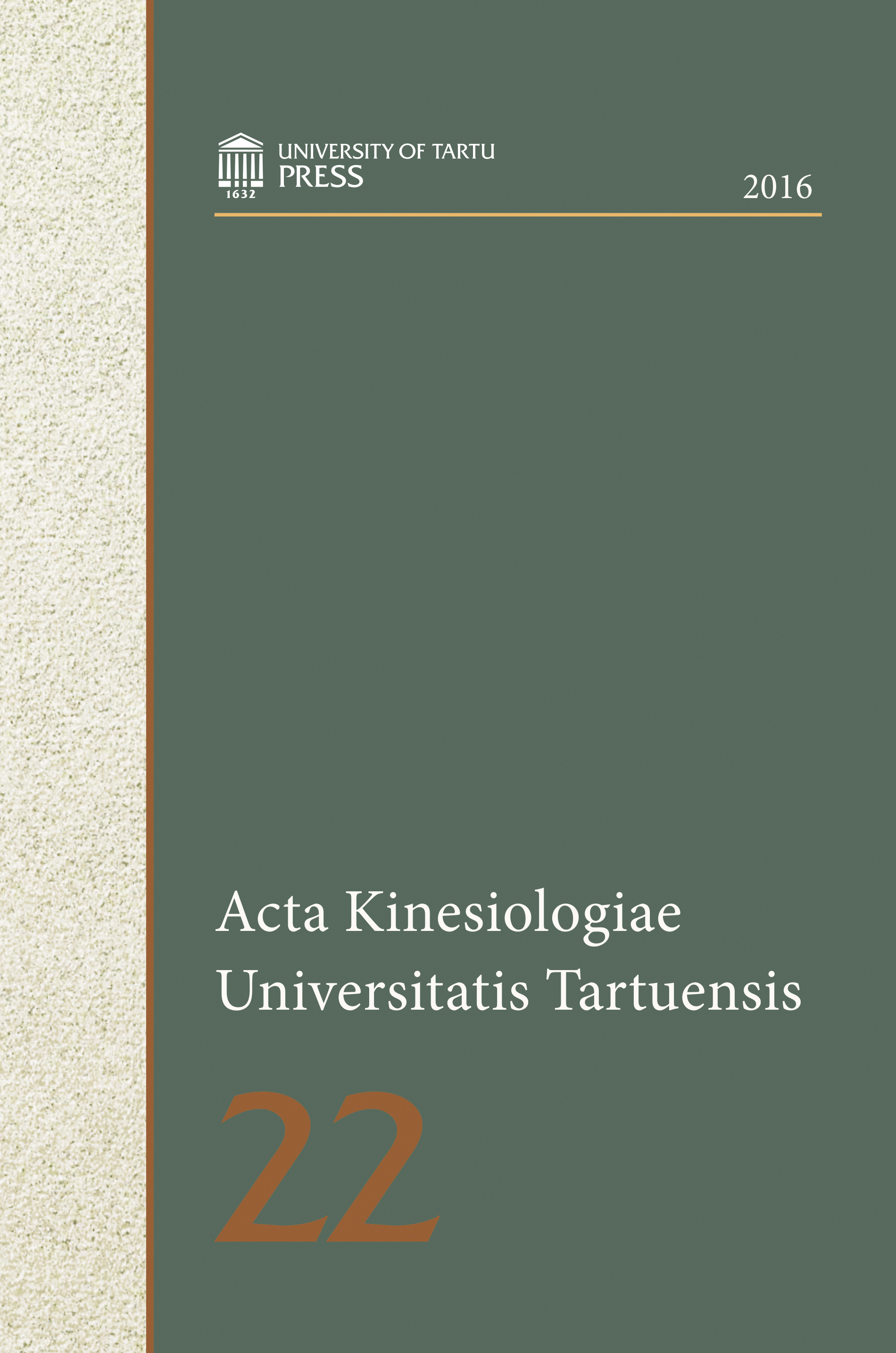Physiological factors affecting performance in elite distance runners
DOI:
https://doi.org/10.12697/akut.2016.22.01Keywords:
VO2max, running economy, anaerobic thresholdAbstract
Running distances from 3000 m to the marathon (42 195 m) are events dominated by energy contribution of the aerobic energy system. The physiological factors that underlie success in these running events are maximal oxygen uptake (VO2max), running economy (RE), the utilization of the maximum oxygen uptake (%VO2max) and velocity at the anaerobic threshold (vAT). VO2max for distance runners competing on an international level has been between 70 and 87 ml/kg/min in men, and between 60 and 78.7 ml/kg/min in women, respectively. Due to lack of air resistance, laboratory testing of RE and vAT are recommended to be conducted on treadmill with 1% slope. %VO2max are in most studies expressed as the average fractional utilization of VO2max at vAT. Much of the current understanding regarding the response to exercise is based on studies of untrained and moderately trained individuals. To use this knowledge to give training recommendations to elite runners is hardly valid. Researchers should therefore exercise caution when giving training recommendations to coaches and elite distance runners based on limited available research.Downloads
Download data is not yet available.


